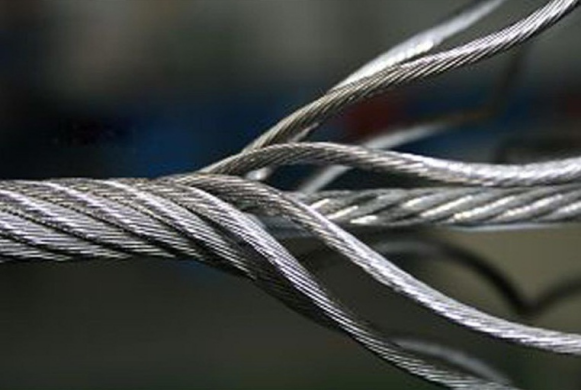Why Lubrication
When a wire rope is manufactured, all the wires, strands and core are immersed in lubrication as the rope is produced.
1.Moving Parts Create Friction.
Wire rope is a machine, which often takes on a complimentary role in many machines or structures. When a wire rope is working with a load for instance, the strands begin to imbed more firmly into the core of the rope. As the axial movement continues, there is a correlating increase in inter-strand pressure when the strands contact each other. As a wire rope operates over a sheave, traction must be created. Traction is the result of friction, created between the wire rope and the sheave. Friction is necessary, but this same friction also causes the lubricant within the wire rope to oxidize, and in turn lose its viscosity. Wire ropes experience constant pressure as they are literally squeezed by the sheave groove. If lubrication is not maintained on a working wire rope, damage caused by the constant friction can shorten the expected service life of a rope by 20% to 30%.
2.What Is the Function of Lubrication?
Reduce Friction—A standard hoist wire rope such as 8 X 19 Seale is made up of eight strands with 19 wires in each strand. This means there are a total of 152 parts moving within this hoist rope. Lubrication reduces the friction as the individual wires move over each other.
Corrosion Protection—Moisture and chemical agents can have a corrosive affect on wire rope. Coating lubricants create a seal on the outside of the wire rope reducing the affect of moisture. Remember that corrosion will shorten the anticipated service life of a wire rope. In addition, most wire ropes fail from the inside. Therefore, it is critical that the center core of all wire ropes have sufficient lubrication.
3.Lubrication Produces Life Extension.
For the best results in your wire rope application, implement lubrication as a necessary part of your wire rope maintenance program. The result will be an extended service life of your wire rope.
Note: the above quoted from Bill Teichgraber (Northern Metalic Sales-Wire Rope & Rigging Business Development https://www.linkedin.com/pulse/why-lubrication-bill-teichgraber)
Why Wire Rope Inspection
4.The Necessity of Wire Rope Inspection
Wire ropes are consumable items with limited life,and during service the physical properties of the wire rope will change. Sooner or later ropes deteriorate for different reasons, but whether the rope should be discarded or still may remain in operation is a difficult question. TST provide the TST-FDSysTM that can be applied to different industries and diverse wire rope and steel-cord conveyor belt operating scenes, and The commitment of TST team is to find solutions for more efficient and safer wire rope operations, and materialize real economic benefic from the improvement of safety management.
5.What is TST-FDSysTM ?
TST-FDSysTM---The system is created by TST scientists and engineers to automatically inspect the physical flaws on the wire ropes and steel-cord conveyor belts. Given the inspected flaw data, the system can thus make evaluations of the safety status and operating performance of the targets. For the onsite engineers and operating managers, TST-FDSysTM will provide both realtime inspection monitor alongside the producing operation and comprehensive report at end of per inspection task. Therefore, flaws on the inspecting target will be noticed instantly wherever it appears and the automatically generated report will demonstrate the overall status of the target with detailed analysis of each inspected flaw.
More Than Safer






